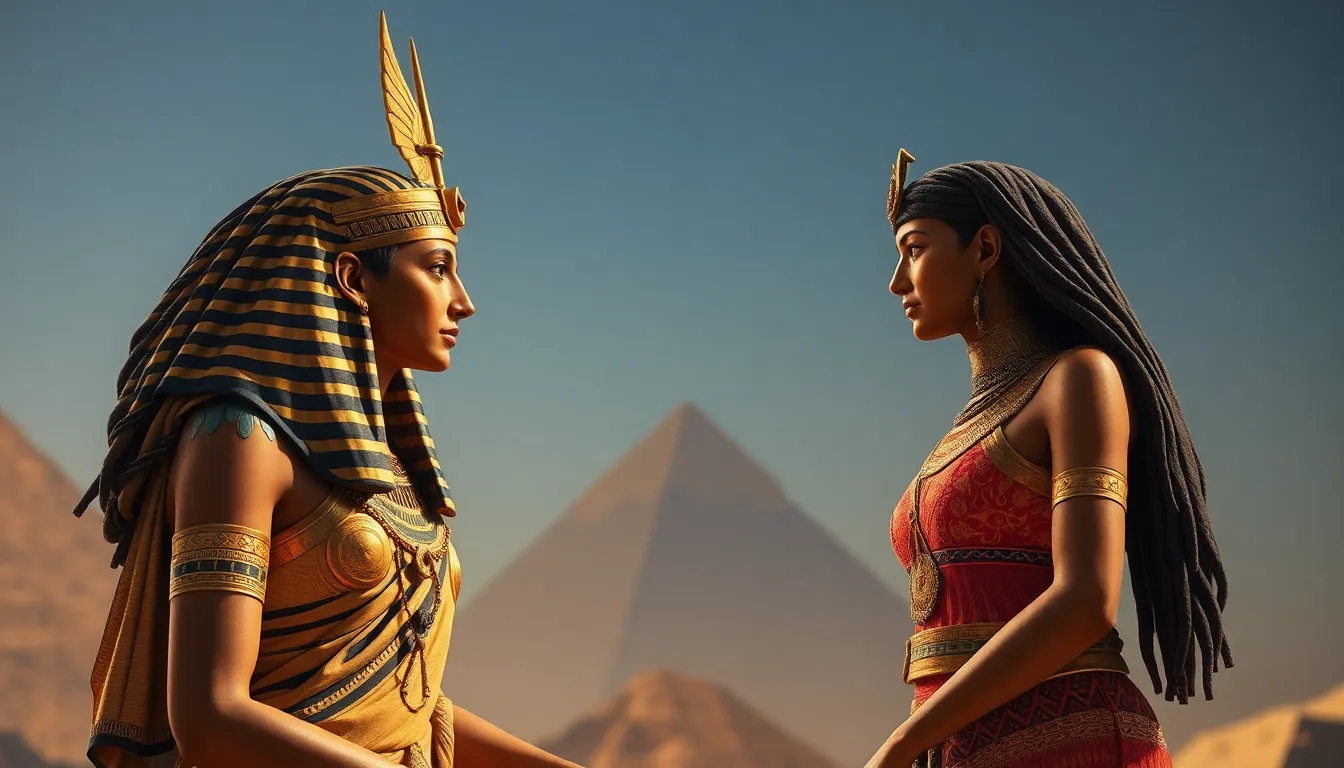The Role of Women in Egyptian Religious Practices
I. Introduction
Ancient Egyptian religion was a complex system of beliefs that encompassed a wide array of gods, rituals, and practices. Central to this rich tapestry were the roles of women, who played multifaceted parts in both the spiritual and social spheres of ancient Egyptian life. Understanding the significance of women in these religious contexts not only sheds light on their contributions but also offers insights into the broader dynamics of gender in ancient cultures.
This article aims to explore the various roles women held within Egyptian religious practices, examining their status, contributions, and the evolving nature of these roles throughout ancient Egyptian history.
II. Historical Context of Women in Ancient Egypt
The social status of women in ancient Egypt was relatively high compared to contemporary civilizations. Women had the right to own property, initiate divorce, and engage in business transactions. This legal autonomy extended into religious life, where women participated actively in various rituals and held significant positions within the temple hierarchy.
Throughout different historical periods, the roles of women shifted, influenced by the prevailing political and cultural contexts:
- Old Kingdom (c. 2686–2181 BCE): Women enjoyed considerable rights, and some were prominent in religious ceremonies.
- Middle Kingdom (c. 2055–1650 BCE): The role of women began to evolve with the rise of more centralized power structures.
- New Kingdom (c. 1550–1070 BCE): Women, especially royal figures, became increasingly influential in religious and political spheres.
III. Women as Priests and Religious Leaders
Women held significant positions as priests in ancient Egyptian temples, where they fulfilled essential roles in the worship of deities. The most prominent among these were the female priests known as “God’s Wives of Amun,” who were highly revered and wielded considerable power.
Notable female religious leaders include:
- Hatshepsut: One of the few female pharaohs who also acted as a high priestess.
- Neith: A goddess associated with war and hunting, also revered by women in priestly roles.
Compared to their male counterparts, female priests often held unique positions, such as performing rites that were deemed inappropriate for men, thus highlighting the distinct and vital roles women played in the religious landscape.
IV. Women in Mythology and Religious Texts
Women are prominently featured in Egyptian mythology, often embodying key concepts and attributes. The representation of women in these myths reflects their importance in both the divine and mortal realms.
Significant female deities include:
- Isis: Goddess of motherhood, magic, and fertility, who played a crucial role in the resurrection of Osiris.
- Hathor: Goddess of love, beauty, and joy, often depicted as a nurturing figure.
- Ma’at: Symbol of truth and justice, representing the balance necessary for the cosmos.
The symbolism of women in religious narratives often reflects broader themes of creation, renewal, and the nurturing aspects of the divine, underscoring their integral roles in the spiritual beliefs of the ancient Egyptians.
V. Ritual Practices Involving Women
Women participated actively in religious ceremonies, often taking on roles that emphasized their importance within the family and community. Ritual practices included:
- Offering prayers and sacrifices at household shrines.
- Leading family rituals during significant life events such as births, marriages, and funerals.
Specific rituals dedicated to women often highlighted their roles in fertility and motherhood, showcasing their divine connections and societal significance. The participation of women in these rituals helped to reinforce their status as vital pillars of both family and community life.
VI. Women’s Influence on Daily Religious Practices
In addition to formal religious roles, women played crucial parts in daily religious practices. Their influence can be seen in various domestic religious activities:
- Household Worship: Women often managed household shrines and performed daily offerings, ensuring the favor of the gods.
- Preservation of Traditions: Women acted as custodians of religious traditions, passing knowledge and practices through generations.
Their roles in domestic worship not only reflected their religious dedication but also affirmed their authority within the family unit, further entrenching their influence in the spiritual lives of their communities.
VII. Changes Over Time: Women’s Roles in Later Periods
The transition from ancient Egyptian religious practices to the Greco-Roman period saw significant changes in women’s roles. As foreign influences permeated Egypt, the political and religious landscapes shifted, impacting women’s participation in religious life.
Key factors included:
- The rise of new religious philosophies that often marginalized traditional practices.
- Political upheaval that altered the status of women in both society and religion.
Despite these changes, many aspects of women’s religious practices persisted, demonstrating a continuity of tradition even amidst transformation.
VIII. Conclusion
In summary, the role of women in ancient Egyptian religious practices was multifaceted and vital. From their positions as priests and religious leaders to their influence in daily household rituals, women significantly shaped the spiritual landscape of ancient Egypt.
The legacy of women in Egyptian religion reveals much about gender roles in ancient cultures, highlighting a complex interplay of power, spirituality, and societal norms. Understanding these roles not only enriches our knowledge of Egyptian civilization but also encourages a broader reflection on the importance of women in historical narratives.




